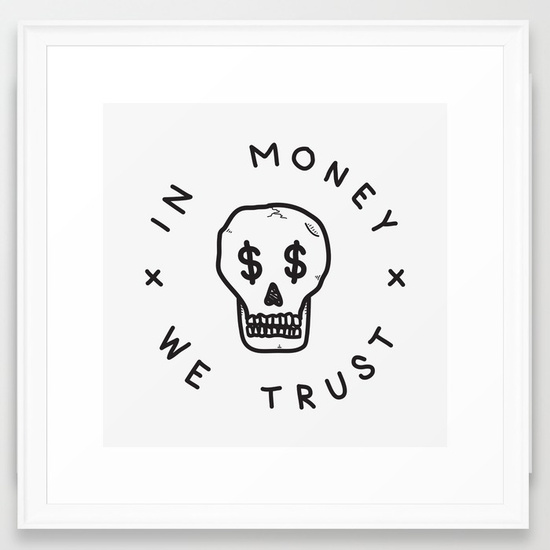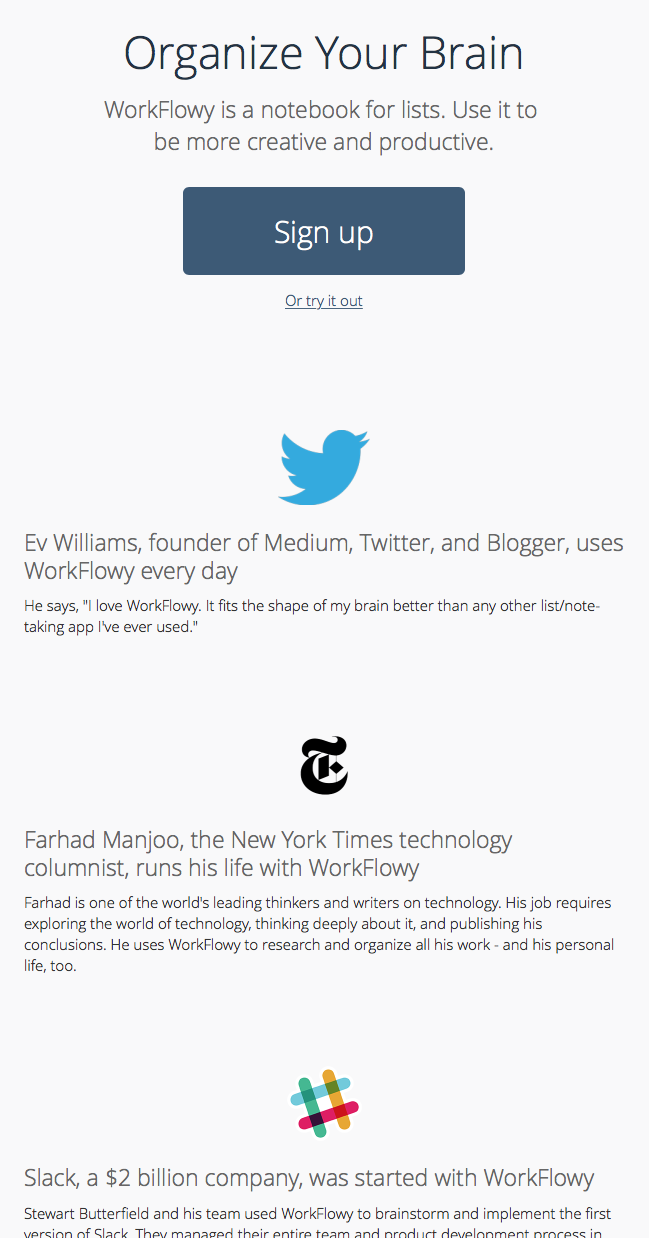Work smart, not hard. Especially if you work from home.
For just about any artist you talk to, this is the most challenging aspect of running their own business. It’s different for everyone, but turning artistic endeavors into something profitable can seem like a blessing and a curse. There’s a perceived line in the sand between (1) spending time creating and (2) spending time building the business around your creations. However, if turning your artwork into something profitable is a serious goal, you’ll need to be good at both. Especially considering that one affords the other and vice versa.
If you’re skills are developing and you’re gathering a solid body of work, but nothing is happening, and business is stagnant–that’s a flag to hop onto the business side of things. The fact is, being talented is not enough! You need to double as a great business person. –Kit King
1 | Make a list: Set major creative and business goals
Do you want to start licensing your work to big box retailers? Do you need to find consistency in your style? Do you want you want to book your first solo show? Do you want to break $1,000 in monthly sales on Society6?
Making this list is a must for every artist. No questions asked. Hang it up somewhere prominent. You need set your sights on something significant so all the steps to get there are identifiable–otherwise you’ll just float around hoping something happens. I hate to say this, but if you commit to “manifesting it” without a plan, you’re going to move a heck of a lot slower than if you set goals and get into problem-solving mode.
When I first started taking making art seriously, I spent the majority of my time creating. After I’d gotten my work to a place where I really felt it represented my style and what I wanted to be creating, splitting time between responding to emails, maintaining social media, planning new projects and marketing my work became a lot more important. Try to set goals to stay focused if you feel like things aren’t at a happy balance. For instance, prioritize different things on different days and set goals for the week. At the very least, being able to look back on it will let you see any gaps between what you want to get done and what you’re actually doing. –Kemi Mai
2 | Make a list: How can you make money RIGHT NOW with your art?
Considering your major goals, what could be a consistent source of income with what you’re already doing? Is it creating on commission? Pitching projects to agencies? Photographing weddings? Trying to get a blog feature and linking back to your S6 shop?
What’s going to keep food on the table and a roof over your head while you build your empire?
If you’re serious about building a business around your art, you need to aspire towards profitability. It’s hard to type that without cringing, but proof is in the pudding. Whether that’s clients, commissions or S6 sales, without bringing in money, you don’t have a sustainable business. Now, it may take some time to get there, which is okay, and the order in which you accomplish those things is up to you. But the ultimate goal is to make more money than you spend–ideally a lot more so you can invest more time on fewer projects.
3 | Prioritize your goals!
Without establishing what’s important and what isn’t, you’re going to spin your tires. Focus on covering your basic needs first–can you afford food on the table and roof over your head? If not, do that first. Then you can get into prioritizing your goals.
It’s becoming really important to prioritize my schedule according to what’s urgent and what can wait. This is more difficult to do than it sounds because when you have a ton of requests, emails and looming deadlines, it all gets jumbled up into this overwhelming mess. So what I’ve been doing lately is writing down different lists separating the urgent from non-urgent. –Terry Fan
4 | Schedule time for specific tasks (including breaks)
Here’s why you need to avoid distractions as much as you can–phone, friends, family, social media, tv, Netflix, etc. When Gloria Mark, a professor at University of California (Irvine), spoke to Fast Company about her study on the cost of interrupted work, she found that “it takes an average of 23 minutes and 15 seconds to get back to the task.”
That’s significant when you think about the amount of work you can get done in 20-25 minutes. If that time is spent re-calibrating to a single task, think about how many times that can happen in a given day!
I’ve realized that I need to take some small breaks (a week, for instance) from drawing, in order to get on track with accounting, website updates, blog posts etc. I also try to do the boring work first (e-mails, invoices etc.), before starting drawing. –Natalie Foss
5 | You won’t build your business overnight
Let’s be honest–the list of things to accomplish can feel never ending. With so many different directions and opportunities you can go down, you really need to break it down into accomplishable tasks. Go back to your major goals and take solace in knowing that with every task you complete, you’re one step closer to financial freedom.
I cut big missions into small trifles. I get frustrated when something big and new needs to be arranged–like my website or Patreon page which took me a year to launch. It happens because your mind says: “We’ve lived perfectly without this for so many years! There’s no point to make the extra effort now!” But the longer you sit on your hands, the larger the effort required to accomplish the task. To outwit this problem, I take lots of little steps so the big projects aren’t as big a deal. –Tanya Shatseva
PRO TIP: There’s this great article on Harvard Business Review about managing your energy, not your time. Consider this supplemental, but a good read nonetheless. In presenting the concept, Tony Schwartz & Catherine McCarthy suggest that “the core problem with working longer hours is that time is a finite resource. Energy is a different story.”
6 | Use calendars and project management tools!!
This was consistent across nearly every artist. You simply cannot keep everything in your brain! Use tools that are available to you to help organize yourself. Whether that’s organizing folders, your time, tasks, etc, there are a myriad of digital tools you can use.
Here’s a few we love:
- Dropbox, Google Drive, iCloud – file storage (ideal for access from multiple devices)
- Workflowy – list making (way cooler than it sounds)
- Photo Transfer App – move files from your Dropbox or Google Drive folders to phone (great for getting files out of storage and ready to share on social media)
- Fluid App – turn any website into an App (Mac only – great for email)
- Google Calendar, iCal – organize yourself and your time
- Evernote, Asana, Trello – project management, set due dates for yourself
7 | Finally, ask yourself: Does what I’m doing get me closer to my goal?
If not, re-prioritize. Obviously, you’ll need to takes some risks from time to time to evolve your craft and business, but remember that everything has an opportunity cost. If you’re scrolling through Instagram, you’re not pitching your favorite art blog to feature you. Basically, If you’re doing one thing, you’re not doing another. So focus on the things that matter most.
PRO TIP: This is a basic business principle, but look at tasks that require the least amount of effort that will yield the most gain. This actually brings us full circle to #1. Look at your list and prioritize the least intensive tasks with the largest positive impact.
As you can probably tell, a lot of time management comes down to understanding what you need be spending your time on. There’s no silver bullet. It’s going to be different for everyone, but identifying what is worth spending your time on is going to make this whole process a whole lot easier. The best thing you could do for yourself is set goals and start achieving them in bite-size amounts.
Featured Artwork by Eugenia Loli


Comments